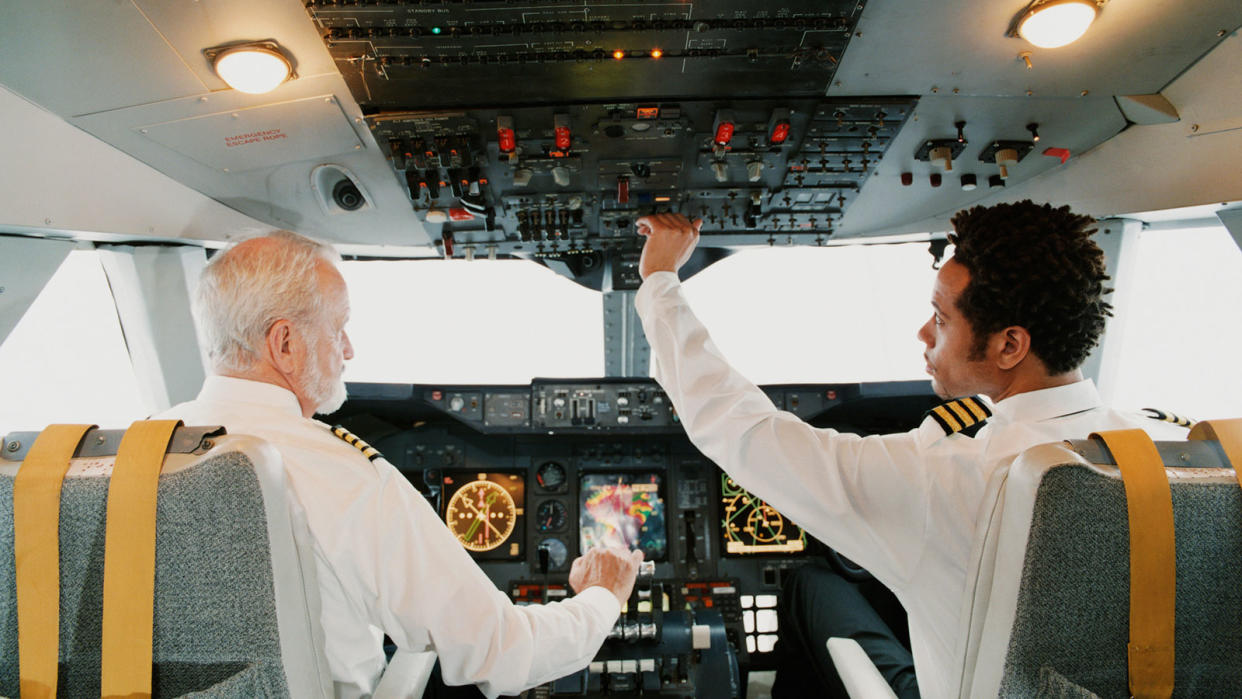How Do Pilots Make Up Time in the Air?

You've just started the first leg of an international flight and your flight's been delayed. But as you taxi to the runway the pilot's voice booms over the intercom, giving you fresh hope that you'll make your connection – because she says she may be able to make up lost time during the trip.
But how in the world do commercial airline pilots "make up" for lost time when they know their flight is running behind? Are they pressing extra-hard on the accelerator?
There are actually a number of ways that pilots can turn back the clocks and get you and your fellow passengers to your next stop on time. Spoiler alert: None of them involve weird sci-fi wormholes or "Top Gun" scene reenactments.
When pilots need to catch up on their schedules, they must first alert air traffic control (ATC) regarding the situation. ATC, of course, provides guidance and direction for all flights to ensure maximum safety and efficiency, and without their go-ahead, your pilot simply can't do anything to make the flight more expeditious. When ATC and pilots coordinate, they may find some wiggle room in the flight plan.
Understand that flight plans are rarely straight lines from Point A to Point B. Instead, they're a series of waypoints that guide the plane along to its destination. By omitting a waypoint or two, called "direct routing," the pilot might be able to shave several minutes from a flight plan.
Jim Cox is a retired US Airways pilot who now operates an aviation safety consulting company called Safety Operating Systems. In an email interview, he said route adjustments are common in the industry. "ATC has preferred routing out of and into large cities. They require that routing be the filed flight plan routing; depending on traffic ATC may approve a request to shorten the flight path between navigation waypoints," he says.
Consequently, this means that with shorter flights there isn't much a pilot can do to save time – longer flights are a better bet for pilots that need to make up time.
Headwinds and Tailwinds
In addition to the route itself, wind conditions greatly affect flight time. A significant headwind (blowing against the plane) will slow the plane's overall speed; a tailwind (pushing the plane) can reduce flight time. If pilots can't avoid headwinds, they'll do their best to minimize a gale's effects on the plane.
Prevailing winds tend to blow from west to east in many parts of the world, so airlines tend to choose the most efficient routes given typical winds for time of day, or even by season. On days when the prevailing winds veer into a different direction, pilots may find that their flight time drops significantly compared to days or weeks earlier.
So airline routes that go west to east or vice versa would allow a pilot to use the wind to save time, assuming weather conditions are favorable. You won't find wind conditions helping with north/south routes.
You might wonder why pilots don't simply increase the plane's speed to make up for time. Modern airliners are already built to fly at optimum maximum speeds. Simply increasing the plane's speed typically accomplishes little in terms of time savings and burns a lot more of an airline's most precious (and most costly) resource – fuel. Even on very long flights, accelerating burns hundreds of extra pounds of fuel and saves (at best) only minutes on overall trip time.
As you consider your schedule, keep in mind that airlines measure trip time using various terms, including flight time and block time. Block time includes events like taxiing and takeoff. Trips to and from busy airports like Atlanta or New York have more cushion built into their block time to give pilots a better chance of reaching their destinations on time. It's on your actual flight time, when the wheels aren't touching the ground, that your pilot may be able to cut a few corners and save time.
Let's end with a caveat regarding any fantasies you might harbor about flying everywhere really fast and ahead of schedule. Airlines work best with highly structured schedules because there's a limited amount of airport infrastructure and manpower to process flights. For instance, if there are 15 gates for disembarking passengers, a sixteenth plane that arrives early has nowhere to go. Similarly, ground crews can only handle so much luggage at once, meaning passengers might arrive ahead of schedule but then pace waiting impatiently for their bags. So, arriving early isn't always a good thing.
The best way to arrive on time at a destination – without your pilot having to resort to any shortcuts – is simply for the plane to leave on time. Some airlines are better at that than others.
Now That's Interesting
Even though engine technologies are vastly improved, commercial airliners haven't gotten any faster since the 1960s – and in many cases, they're actually a bit slower than their ancestors. It all boils down to engine efficiency, drag and fuel costs – airlines operate on exacting profit margins and fuel is a major expense.
Original article: How Do Pilots Make Up Time in the Air?
Copyright © 2025 HowStuffWorks, a division of InfoSpace Holdings, LLC, a System1 Company


